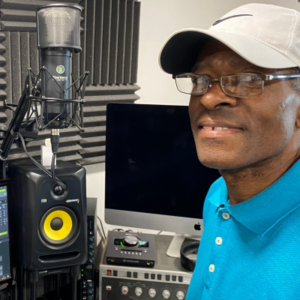David Hood was born in Sheffield, in the Shoals area, in 1943. He learned to play a variety of instruments at high school, including trombone, guitar and bass. During his studies at the University of North Alabama, he played with a group called the Mystics, whose members had all attended Sheffield High School. He later visited FAME Studios and played trombone on James & Bobby Purify’s recording of “I’m Your Puppet” in 1966.
Rick Hall must have been impressed by that contribution and by the versatility of a session man who could play at least three instruments. Hood was added to the second FAME session band.

David Hood
Quin Ivy and Rick Hall soon called on his bass guitar skills for sessions with Percy Sledge and Etta James.
David Hood’s bass lines were the glue that held the group together, weaving between rhythm and melody with remarkable fluidity. His style blended deep, grounded tones with melodic flourishes that added richness to each track. Hood had the rare ability to make the bass sing without ever overshadowing the vocalist, a testament to his humility and musicianship.
His adaptability meant he could slide from gospel-infused soul to rock or pop sessions seamlessly, making him one of the most in-demand bass players of his era. David Hood, the bassist of the Muscle Shoals Rhythm Section, was one of the quiet architects of the Muscle Shoals sound. His style was subtle yet profoundly effective, distinguished by fluid, melodic lines that anchored the groove without ever overwhelming the arrangement. Unlike many bassists who sought to dominate or showcase technical flair, Hood’s genius lay in restraint and sensitivity. He had an uncanny ability to lock into the pocket with Roger Hawkins’ drumming, creating a foundation that was solid, soulful, and deceptively intricate.
One of the clearest demonstrations of Hood’s approach can be heard on the Staple Singers‘ ’ll Take You There” (1972). The bass
ine is instantly recognisable: simple in construction, yet utterly hypnotic. Hood’s playing sets up a looping, trance-like groove that never wavers, giving the track its earthy propulsion while leaving space for Mavis Staples’ vocal to soar. Hood’s bass provides both structure and soul, a line so integral that it became one of the defining features of the song. It is a textbook example of Hood’s philosophy: serve the song and let the groove do the talking.
With Bob Seger’s “Old Time Rock and Roll” (1979), Hood provides driving momentum. His bass locks tightly with the rhythm section, underpinning Seger’s gravelly vocal with muscular simplicity. Rather than elaborate runs, Hood favours precision and consistency, ensuring the energy of the song is carried forward without distraction. It is another demonstration of his ability to prioritise impact over complexity.
On Paul Simon’s “Kodachrome” (1973), Hood’s bass demonstrates another side of his style. Here, he moves with greater buoyancy, offering rhythmic punctuation that complements Simon’s bright, playful melody. His lines are less about repetition and more about subtle embellishment, showing his versatility and ability to adapt to different genres. The part is understated, but it lifts the track with warmth and character, embodying the Muscle Shoals ethos of never overplaying.
Even outside soul and rock, Hood’s adaptability shone. On Cher’s “Gypsys,Tramps & Thieves” (1971), his playing blends restraint with lyrical phrasing, adding depth to a song built around storytelling. His lines are less about groove here and more about colouring the narrative, showing his instinct for emotional nuance.
Taken together, these examples illustrate Hood’s hallmark: a player who rarely demanded attention, yet who shaped the emotional and rhythmic character of every track he touched. His bass lines were never flashy, but they were unforgettable, precisely because they embodied honesty and authenticity. David Hood’s contribution to the Muscle Shoals sound was foundational—he was the quiet pulse that made the music breathe.
















